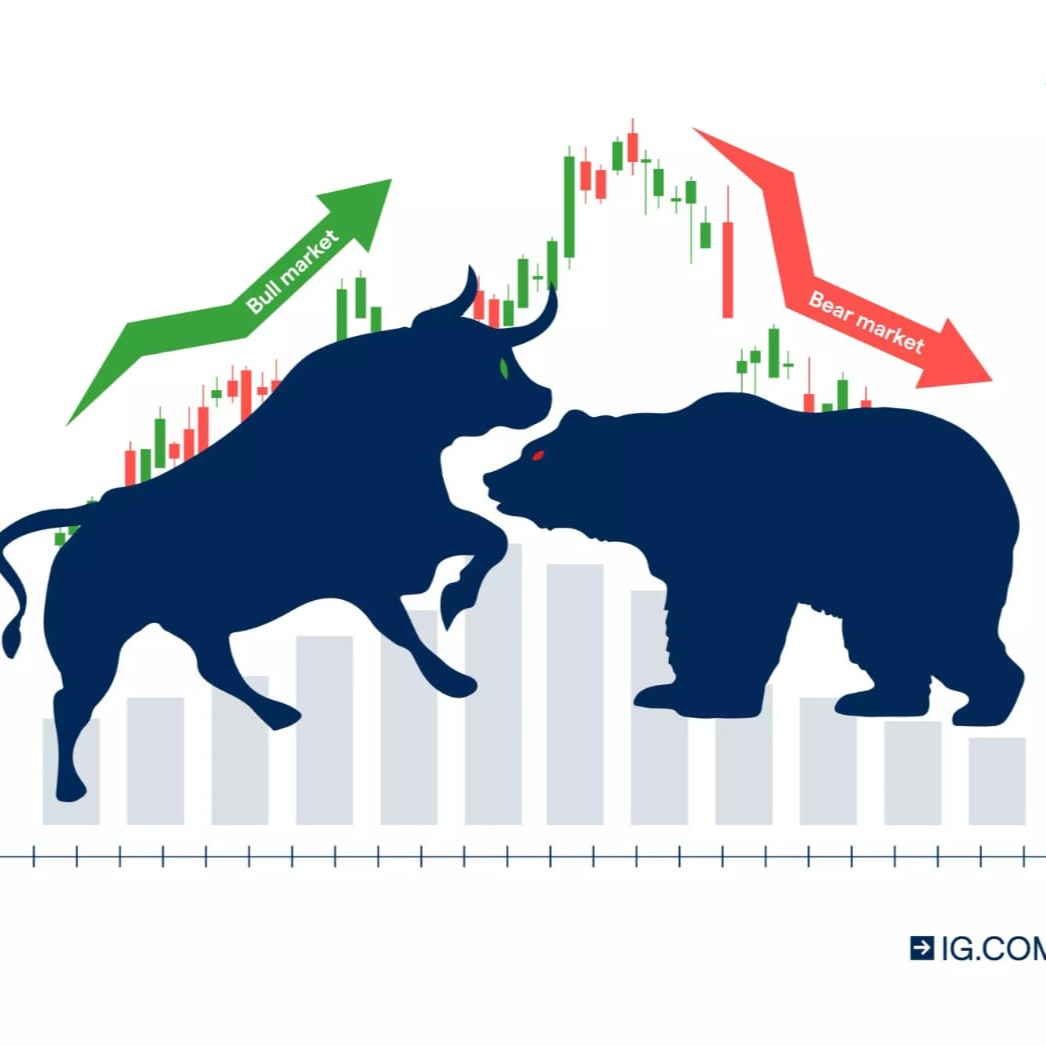
Prezzo di DeepBook ProtocolDEEP
EUR
Listato
€0.03692EUR
-5.00%1D
Il prezzo di DeepBook Protocol (DEEP) in Euro è €0.03692 EUR.
Grafico dei prezzi di DeepBook Protocol (EUR/DEEP)
Ultimo aggiornamento il 2025-11-29 22:03:49(UTC+0)
Convertitore da DEEP a EUR
DEEP
EUR
1 DEEP = 0.03692 EUR. Il prezzo di conversione attuale da 1 DeepBook Protocol (DEEP) a EUR è 0.03692. Questo tasso è solo di riferimento.
Bitget offre le commissioni di transazione più basse tra tutte le principali piattaforme di trading. Più alto è il tuo livello VIP, più i tassi sono vantaggiosi.
Prezzo live di DeepBook Protocol in EUR di oggi
Il prezzo di DeepBook Protocol in tempo reale è di €0.03692 EUR oggi, con una capitalizzazione di mercato attuale di €161.28M. Il prezzo di DeepBook Protocol è sceso di 5.00% nelle ultime 24 ore e il volume di trading nelle 24 ore è €16.04M. Il tasso di conversione DEEP/EUR (da DeepBook Protocol a EUR) viene aggiornato in tempo reale.
Quanto vale 1 DeepBook Protocol in Euro?
Al momento, il prezzo di DeepBook Protocol (DEEP) in Euro è €0.03692 EUR. Puoi acquistare 1 DEEP per €0.03692, o 270.85 DEEP per €10 adesso. Nelle ultime 24 ore il prezzo più alto di DEEP in EUR è stato €0.03917 EUR, e il prezzo più basso di DEEP in EUR è stato €0.03661 EUR.
Pensi che il prezzo di DeepBook Protocol aumenterà o calerà oggi?
Voti totali:
Aumenterà
0
Calerà
0
I dati di voto vengono aggiornati ogni 24 ore. Essi riflettono le previsioni della community sull'andamento dei prezzi di DeepBook Protocol e non devono essere interpretati come consigli di investimento.
Info sul mercato di DeepBook Protocol
Performance del prezzo (24h)
24h
Minimo di 24h: €0.04Massimo di 24h: €0.04
Massimo storico (ATH):
€0.2962
Variazione di prezzo (24h):
-5.00%
Variazione di prezzo (7G):
+7.45%
Variazione di prezzo (1A):
-25.71%
Classifica del mercato:
#170
Market cap:
€161,275,662.96
Market cap completamente diluito:
€161,275,662.96
Volume (24h):
€16,040,967.54
Offerta circolante:
4.37B DEEP
Offerta massima:
--
Rapporto di analisi IA su DeepBook Protocol
Punti salienti del mercato crypto di oggiVisualizza il rapporto
Storico prezzi di DeepBook Protocol (EUR)
Il prezzo di DeepBook Protocol è variato di un -25.71% nell’ultimo anno. Il prezzo più alto di DEEP in EUR nell’ultimo anno è stato €0.2962, mentre il prezzo più basso di DEEP in EUR nell’ultimo anno è stato €0.03353.
DataVariazione del prezzo (%) Prezzo più basso
Prezzo più basso Prezzo più alto
Prezzo più alto 
 Prezzo più basso
Prezzo più basso Prezzo più alto
Prezzo più alto 
24h-5.00%€0.03661€0.03917
7d+7.45%€0.03393€0.04395
30d-40.76%€0.03353€0.06722
90d-68.91%€0.03353€0.1312
1y-25.71%€0.03353€0.2962
Tutto il periodo-35.66%€0.009268(2024-10-14, 1 anno/i fa)€0.2962(2025-01-19, 315 giorni fa)
Qual è il prezzo più alto di DeepBook Protocol?
Il massimo storico (ATH) di DEEP nel EUR è stato di €0.2962, registrato il 2025-01-19. Rispetto all'ATH di DeepBook Protocol, il prezzo attuale di DeepBook Protocol è sceso di 87.54%.
Qual è il prezzo più basso di DeepBook Protocol?
Il minimo storico (ATL) di DEEP nel EUR è stato di €0.009268, registrato il 2024-10-14. Rispetto all'ATL di DeepBook Protocol, il prezzo attuale di DeepBook Protocol è salito di 298.35%.
Previsione del prezzo di DeepBook Protocol
Quando è il momento giusto per acquistare DEEP? Dovrei acquistare o vendere DEEP ora?
Quando decidi se acquistare o vendere DEEP, devi innanzitutto considerare la tua strategia di trading. L'attività di trading tra i trader a lungo e a breve termine sarà diversa. L'Analisi tecnica di DEEP di Bitget può fornire un riferimento per il trading.
Secondo l'Analisi tecnica di DEEP (4h), il segnale di trading è Vendi adesso.
Secondo l'Analisi tecnica di DEEP (1d), il segnale di trading è Vendi adesso.
Secondo l'Analisi tecnica di DEEP (1w), il segnale di trading è Vendi.
Quale sarà il prezzo di DEEP nel 2026?
Nel 2026, sulla base di un tasso di crescita annuale previsto del +5%, il prezzo di DeepBook Protocol (DEEP) dovrebbe raggiungere €0.04155; sulla base del prezzo previsto per quest'anno, il ritorno sugli investimenti cumulativo derivante dall'holding di DeepBook Protocol fino alla fine del 2026 raggiungerà +5%. Per maggiori dettagli, consulta: Previsioni del prezzo di DeepBook Protocol per il 2025, 2026, 2030-2050Quale sarà il prezzo di DEEP nel 2030?
Nel 2030, sulla base di un tasso di crescita annuale previsto del +5%, il prezzo di DeepBook Protocol (DEEP) dovrebbe raggiungere €0.05050; sulla base del prezzo previsto per quest'anno, il ritorno sugli investimenti cumulativo derivante dall'holding di DeepBook Protocol fino alla fine del 2030 raggiungerà 27.63%. Per maggiori dettagli, consulta: Previsioni del prezzo di DeepBook Protocol per il 2025, 2026, 2030-2050
Promozioni popolari
Prezzi di DeepBook Protocol globali
Quanto vale DeepBook Protocol in altre valute? Ultimo aggiornamento: 2025-11-29 22:03:49(UTC+0)
DEEP a ARS
Argentine Peso
ARS$61.93DEEP a CNYChinese Yuan
¥0.3DEEP a RUBRussian Ruble
₽3.33DEEP a USDUnited States Dollar
$0.04DEEP a EUREuro
€0.04DEEP a CADCanadian Dollar
C$0.06DEEP a PKRPakistani Rupee
₨12.06DEEP a SARSaudi Riyal
ر.س0.16DEEP a INRIndian Rupee
₹3.83DEEP a JPYJapanese Yen
¥6.69DEEP a GBPBritish Pound Sterling
£0.03DEEP a BRLBrazilian Real
R$0.23Come acquistare DeepBook Protocol(DEEP)

Crea il Tuo Conto Bitget Gratuito
Registrati su Bitget con il tuo indirizzo e-mail/numero di cellulare e crea una password forte per proteggere il tuo conto.

Verifica il Tuo Conto
Verifica la tua identità inserendo i tuoi dati personali e caricando un documento d'identità valido con foto.

Converti DEEP in EUR
Scegli tra le criptovalute da scambiare su Bitget.
FAQ
Qual è il prezzo attuale della moneta DeepBook Protocol?
Il prezzo attuale della moneta DeepBook Protocol può essere controllato su Bitget Exchange o su altre piattaforme di criptovalute affidabili.
Quali fattori influenzano il prezzo del DeepBook Protocol?
I fattori che influenzano il prezzo del DeepBook Protocol includono la domanda del mercato, le dinamiche dell'offerta, le tendenze generali del mercato e gli sviluppi all'interno dell'ecosistema del DeepBook Protocol.
Il prezzo del DeepBook Protocol aumenterà in futuro?
Sebbene sia difficile prevedere i movimenti futuri dei prezzi, gli investitori spesso analizzano le tendenze di mercato e gli sviluppi dei progetti all'interno del DeepBook Protocol per fare previsioni informate.
Dove posso acquistare DeepBook Protocol al miglior prezzo?
Puoi acquistare DeepBook Protocol a prezzi competitivi sull'exchange Bitget, dove puoi approfittare di varie opzioni di trading.
Il Protocollo DeepBook è un buon investimento?
La fattibilità del Protocollo DeepBook come investimento dipende dalla ricerca individuale e dalle condizioni di mercato. Considera sempre la tua tolleranza al rischio prima di investire.
Come si confronta il prezzo del DeepBook Protocol con il suo massimo storico?
Il prezzo del DeepBook Protocol può essere confrontato con il suo massimo storico controllando i dati storici sui prezzi su Bitget Exchange o su varie piattaforme di analisi delle criptovalute.
Quali sono le previsioni di prezzo per il DeepBook Protocol nel prossimo anno?
Le previsioni di prezzo per il DeepBook Protocol variano ampiamente e dipendono da varie condizioni di mercato e analisi. È consigliabile rimanere aggiornati con le notizie di mercato e le analisi degli esperti.
Come posso tenere traccia delle tendenze di prezzo del Protocollo DeepBook?
Le tendenze di prezzo del Protocollo DeepBook possono essere tracciate utilizzando strumenti di analisi di mercato e direttamente su piattaforme come Bitget Exchange.
Ci sono eventi in arrivo che potrebbero influenzare il prezzo del DeepBook Protocol?
Eventi imminenti, come aggiornamenti tecnologici o annunci di partnership, potrebbero influenzare il prezzo del DeepBook Protocol. Tieni d'occhio le notizie dei canali ufficiali.
Qual è la capitalizzazione di mercato del DeepBook Protocol e come influisce sul suo prezzo?
La capitalizzazione di mercato del DeepBook Protocol riflette il suo valore di mercato totale, che può influenzare la percezione degli investitori e le dinamiche dei prezzi. Puoi trovare informazioni attuali sulla capitalizzazione di mercato su Bitget Exchange.
Qual è il prezzo attuale di DeepBook Protocol?
Il prezzo in tempo reale di DeepBook Protocol è €0.04 per (DEEP/EUR), con una capitalizzazione di mercato attuale di €161,275,662.96 EUR. Il valore di DeepBook Protocol è soggetto a frequenti fluttuazioni a causa dell’attività continua, 24 ore su 24 e 7 giorni su 7, del mercato crypto. Il prezzo attuale di DeepBook Protocol in tempo reale e i suoi dati storici sono disponibili su Bitget.
Qual è il volume di trading di 24 ore di DeepBook Protocol?
Nelle ultime 24 ore, il volume di trading di DeepBook Protocol è €16.04M.
Qual è il massimo storico di DeepBook Protocol?
Il massimo storico di DeepBook Protocol è €0.2962. Questo massimo storico è il prezzo più alto di DeepBook Protocol da quando è stato lanciato.
Posso acquistare DeepBook Protocol su Bitget?
Sì, DeepBook Protocol è attualmente disponibile sull’exchange centralizzato di Bitget. Per altre informazioni dettagliate, consulta la guida su Come acquistare deepbook-protocol .
Posso ottenere un guadagno costante investendo in DeepBook Protocol?
Ovviamente Bitget fornisce un piattaforma di trading strategico, con trading bot intelligenti per automatizzare le operazioni e ottenere dei profitti.
Dove posso acquistare DeepBook Protocol con la commissione più bassa?
Siamo entusiasti di annunciare che la piattaforma di trading strategico è ora disponibile sull’exchange di Bitget. Bitget offre delle commissioni di trading e una profondità tra le migliori del settore per garantire ai trader investimenti redditizi.
Prezzi delle criptovalute correlate
Prezzo di Ethereum (EUR)Prezzo di Worldcoin (EUR)Prezzo di dogwifhat (EUR)Prezzo di Kaspa (EUR)Prezzo di Smooth Love Potion (EUR)Prezzo di Terra (EUR)Prezzo di Shiba Inu (EUR)Prezzo di Dogecoin (EUR)Prezzo di Pepe (EUR)Prezzo di Cardano (EUR)Prezzo di Bonk (EUR)Prezzo di Toncoin (EUR)Prezzo di Pi (EUR)Prezzo di Fartcoin (EUR)Prezzo di Bitcoin (EUR)Prezzo di Litecoin (EUR)Prezzo di WINkLink (EUR)Prezzo di Solana (EUR)Prezzo di Stellar (EUR)Prezzo di XRP (EUR)
Dove posso acquistare DeepBook Protocol (DEEP)?
Sezione video: verifica rapida e accesso rapido al trading

Come completare la verifica dell’identità su Bitget e proteggersi dalle frodi
1. Accedi al tuo account Bitget.
2. Se sei nuovo/a su Bitget, guarda il nostro tutorial su come creare un account.
3. Passa sull’icona del tuo profilo, clicca su “Non verificato” e quindi su “Verifica”.
4. Scegli il Paese o il territorio di emissione del tuo documento d’identità e il tipo di documento e segui le istruzioni.
5. Seleziona “Verifica mobile” o “Verifica PC” in base alle tue preferenze.
6. Inserisci i tuoi dati, invia una copia del tuo documento d’identità e scatta un selfie.
7. Invia la tua richiesta ed è fatta: hai completato la verifica dell’identità!
Acquista DeepBook Protocol per 1 EUR
Un regalo di benvenuto del valore di 6200 USDT per i nuovi utenti di Bitget!
Acquista DeepBook Protocol
Gli investimenti in criptovalute, incluso l’acquisto di DeepBook Protocol online tramite Bitget, sono soggetti a rischio di mercato. Bitget ti fornisce modalità facili e pratiche per acquistare DeepBook Protocol. Ci impegniamo al massimo per informare gli utenti sulle criptovalute presenti sull’exchange. Ad ogni modo, non siamo responsabili per le conseguenze che si potrebbero verificare a seguito dell’acquisto di DeepBook Protocol. Questa pagine e le informazioni presenti non rappresentano un consiglio a investire su una determinata criptovaluta.
Convertitore da DEEP a EUR
DEEP
EUR
1 DEEP = 0.03692 EUR. Il prezzo di conversione attuale da 1 DeepBook Protocol (DEEP) a EUR è 0.03692. Questo tasso è solo di riferimento.
Bitget offre le commissioni di transazione più basse tra tutte le principali piattaforme di trading. Più alto è il tuo livello VIP, più i tassi sono vantaggiosi.
Risorse di DEEP
Valutazioni di DeepBook Protocol
4.4
Tag:
Contratti:
--
Bitget Insights

BGUSER-SNXYLE69
2025/10/02 04:50
friends
$DEEP its my opinion 1$ and 10$ 😜 so what's ur opinion ? comment now 0.12
DEEP-5.31%

ScalpingX
2025/09/29 08:33
$DEEP - Mcap 426,44M$ - 88%/ 43,4K votes Bullish
SC02 M5 - pending Long order. Entry is within HVN + not affected by any weak zone, estimated stop-loss around 1.47%. The uptrend is in the 199th cycle, advance amplitude 11.85%.
#TradingSetup #CryptoInsights
DEEP-5.31%

Jahanzaib_Gondal
2025/09/18 04:25
$ZKC: Game Time. Analyzing the New $ZKC Power on Bitget.
Subtitle: The buzzer beater has sounded. $ZKC the native token for the elite zkSync ecosystem, is now live for trading on Bitget. We break down the pre-game analysis and the potential plays ahead.
Let's get straight to the scouting report.
The Player: Who is $ZKC?
$ZKC isn't just another name on the roster. It's the utility token for zkSync Era, a top-tier Layer-2 blockchain using advanced zero-knowledge (ZK) proofs to scale Ethereum. Think of it as the fuel and the franchise player for a faster, cheaper Ethereum experience.
· Position: Utility Token / Ecosystem Driver
· Key Stats: Powers network security, pays gas fees via account abstraction, and governs the future of the zkSync protocol.
· Draft Position: Highly touted prospect with a strong technical foundation.
The Market: First Quarter Analysis
The opening minutes of a new listing are all about volatility and momentum. $ZKC is hitting the court with a few key advantages:
· Strong Bench (Ecosystem): zkSync isn't a rookie. It has a deep bench of DeFi apps, NFTs, and users already playing on its network. This isn't a build-from-scratch project.
· Crowd Hype (Demand): Launching on a major exchange like Bitget provides instant liquidity and access to a global audience of traders. Expect a high-volume opening.
· The Game Plan (Tokenomics): The token is designed to be used, not just held. Real utility creates real demand.
Key Resistance Level (The Defense to Break): $0.95 - $1.05 This is the first major test.A strong breakout above this zone on high volume could signal a run-up.
Key Support Level (The Home-Court Advantage): $0.65 - $0.75 This is the floor.Holding this level is critical for maintaining bullish momentum. A break below could see a retreat to find stronger support.
The Playbook: Price Prediction Scenarios
This is not financial advice. This is a game plan based on market mechanics.
· Bull Case (The Championship Run): If Bitcoin holds strong and the altcoin market rallies, $ZKC's unique narrative could make it a standout performer.
Short-term target: $1.50 - $2.00. This would require sustained buying pressure and overall market greed.
· Base Case (A Solid Season): The most likely scenario is consolidation after the initial listing frenzy. Price action chops between $0.80 and $1.20 as the market digests the initial supply and demand. This is healthy for long-term growth.
· Bear Case (An Off Night): If the broader crypto market sells off, all new listings are vulnerable. A break below key support could see a test of $0.50 or lower. This is a risk every trader must account for.
Final Buzzer: How to Play It
1. Watch the Volume: High volume on green candles = strong buying interest. Low volume on pumps = a potential fakeout.
2. Track BTC: If Bitcoin tanks, it's hard for any altcoin, especially a new one, to rally. Know the macro climate.
3. Manage Your Risk: This is a new, volatile asset. Size your position accordingly. Don't go all-in on the first play.
$ZKC is now live. The game is on.
BTC+0.09%
FUEL-0.61%

YASIRALICTRADER🌟
2025/09/18 03:13
📊🔥 BTC Exchange Reserves Drop to Multi-Year Lows: What It Means for Price Action
The Bitcoin market has just hit a critical milestone: exchange reserves are now at multi-year lows. This development is more than just a data point—it’s a powerful signal of shifting market dynamics, investor sentiment, and long-term price potential. For traders, institutions, and retail holders alike, this trend could reshape how Bitcoin behaves in the months ahead. Let’s dive deep into what this means. 🚀
---
✨ 📉 BTC Exchange Reserves Explained
What are Exchange Reserves?
Exchange reserves represent the total amount of Bitcoin held in wallets controlled by centralized exchanges.
Why it Matters?
When reserves drop, it typically means fewer coins are available for immediate selling, suggesting that investors are moving their BTC to cold storage for long-term holding.
---
🚀 🐂 Supply Shock in the Making?
With fewer coins on exchanges, liquidity shrinks.
A shrinking supply often leads to a supply-demand imbalance, which can trigger sharp upward movements in price when demand increases.
This pattern has historically aligned with bullish rallies, particularly when reserves hit extreme lows.
---
📊 On-Chain Data Insights
Multi-year lows in reserves reflect a trend similar to pre-bull market phases in previous cycles.
Large holders (whales) are accumulating and moving BTC to cold wallets.
Institutional-grade custodianship is on the rise, indicating growing long-term confidence.
---
⚡ Key Investor Takeaways
📉 Less BTC available to sell → Lower selling pressure.
📈 Higher probability of price appreciation as demand meets reduced supply.
🐋 Whale accumulation signals smart money positioning for the next leg up.
---
🌍 Broader Market Implications
A decline in reserves could reduce volatility in the short term, as panic selling becomes harder with fewer coins on exchanges.
Long-term, it may amplify bullish momentum if mainstream demand surges—especially with ETFs and institutional inflows accelerating.
This aligns perfectly with the “digital gold” narrative as more investors treat Bitcoin as a long-term store of value rather than a trading asset.
---
🔮 Outlook: What’s Next for BTC?
If exchange reserves continue falling, expect higher resistance to downside pressure.
Potential catalysts like ETF inflows, Fed policy shifts, and global liquidity trends could magnify the impact of low reserves.
The stage may be set for another historic BTC rally, with scarcity as the fuel and institutional adoption as the spark.
---
✅ Final Thoughts
The drop in BTC exchange reserves is not just a technical metric—it’s a macro signal. Investors are pulling Bitcoin off exchanges because they believe in its long-term potential. As reserves decline, the supply squeeze narrative strengthens, setting Bitcoin up for possible explosive price movements in the near future.
👉 In short: Low reserves = strong hands = bullish signal. 🐂🔥
---
BTC+0.09%
FUEL-0.61%

BGUSER-VSKY448K
2025/09/18 01:41
$SPON another deep dumpbin
DEEP-5.31%
Trading
Earn
Prezzi delle monete listate di recente su Bitget
Calcolatore del profitto di 微信~WeChatCalcolatore del profitto di Bluwhale AI💎Calcolatore del profitto di NoKings 1776Calcolatore del profitto di $MerlinSCalcolatore del profitto di AnomaCalcolatore del profitto di ePowerX On BaseCalcolatore del profitto di $FROGTIFA🔥Calcolatore del profitto di 微信~WeChat🎁💡⭕Calcolatore del profitto di 新兴的AI企业..📈Calcolatore del profitto di Zimomo








